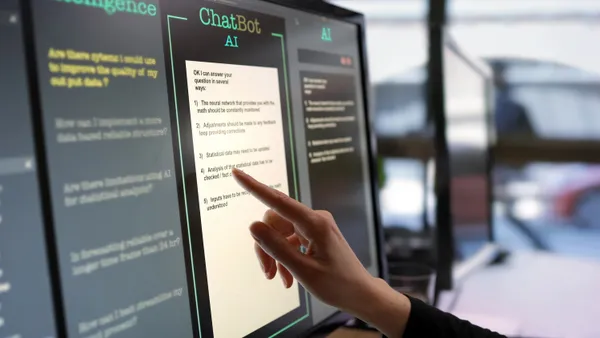Construction is in the midst of a major technological and process disruption that promises to significantly compress schedules, up productivity and expand savings, according to two leading industry forecasters.
Broadly, this disruptive force is called prefabrication, but it’s also known as modular construction, industrialized construction or offsite construction. However you refer to the name of the trend, a report from Dodge Data and Analytics says the ramifications for contractors are profound over the next three years:
- Prefabricated multi-trade assemblies will be used by 58% of contractors doing prefabrication in general — up from the 33% using this approach now.
- Full volumetric modular construction, in which entire parts of buildings are delivered preconstructed onsite and assembled together will be used by 61% of contractors on at least 10% of their projects, up from just 44% currently.
- About 90% of contractors report that they achieve improved productivity, improved quality and increased schedule certainty when using these methods compared to traditional stick-built construction.
Those trends are producing the potential for a full-fledged construction productivity boom, according to a McKinsey report: “For decades, construction has lagged behind other sectors in productivity. Modular construction offers the industry an opportunity to make a step-change,” the report predicted. The authors said that’s due to maturing digital tools that facilitate design and optimize delivery along with changing perceptions about prefab.
But the real driver may be the dramatic rise in productivity and profits contractors can see when they shift to prefab, as outlined in the McKinsey report:
- Using prefab construction methods can accelerate project timelines 20% to 50%.
- Prefab methods have the potential to yield 20% cost savings.
- Prefab construction in European and U.S. markets has the potential to deliver annual savings of up to $22 billion.
Already some of the industry’s biggest players are perfecting prefab methods and upending business models, disrupting markets, and “out-dataing” the competition. Here’s how three leading companies are doing it — and what you can learn from them:
1. From project to product. Clark Pacific was founded in 1963 as a precaster. But prefab construction methods and technology has dramatically shifted its business model and even the way the company views itself. Today, the firm has expanded into a full-fledged designer, manufacturer and constructor of prefabricated buildings and façade systems. The approach has been such a success that Clark Pacific’s roadmap includes expansion into more prefab products and services.
“We realized the more that we can incorporate into our systems, the easier it is for everyone,” said Mark Palmer, estimating manager. “Since prefabrication lends itself to integrating systems off site in the factory, it’s a natural shift.”
Technology is the backbone. Clark Pacific relies on a single-source solution, which means Clark Pacific is the single point of contact for the design team. That in turn simplifies the design process and jobsite management, while giving owners one source of contact for warranty questions. Technology also allows the company to clearly show owners the benefits of prefab — improved efficiency, lower costs and less rework — and win more work now and in the future. “We talk a lot about the offsite continuum and how our customers can benefit from all levels of prefabrication,” said Angela Jackson, marketing program and operations manager. “The further down on the continuum a project is, the more the customer benefits from cost and schedule certainty, less waste and reduced site impacts.”
2. Making time. PT Blink’s core steel design technology and construction methodology is a patent-protected post-tensioned tray prefabrication system. But what the company really sells is time. In fact, the company says it can give up to 40% of a project schedule back to building owners and developers. How? In a word, technology.
PT Blink uses this technology to deliver dimensionally controlled processes and structures in significantly less time resulting in measurable downstream productivity gains for all stakeholders. For example, the company worked with Trimble Consulting to gather all historical data and create an algorithm that allows it to make designs that previously took two weeks in 30 seconds. It also uses Trimble Connect to coordinate RFIs and design reviews as well as track and capture data throughout the prefab process. And it’s using augmented reality to stage and see components on-site and how they interact with structures. “We’re sort of like the antidote to vertically integrated construction,” said Tim Courtright, business growth strategist. “I’d argue that our model is a lot more flexible and scalable.”
3. All in on BIM. Consolis is Europe’s leading pre-cast concrete solutions provider, with more than 11,000 employees in 21 countries around the world and annual 2018 revenues of $1.5 billion. Now, specialized BIM technology is leading the way to future growth. The company has embarked on 10 pilot projects centered around use-cases where BIM could be more efficient. The first project centered on producing 3D models at the tender stage for better client engagement and sales. “We did the research into what our clients are requesting and what the industry is demanding, and we realized we need to deliver this,” said Victor Snook, marketing director and BIM program director.
Using integrated technology to produce a model at the tender stage allowed the company to generate an automatic bill of materials along with quicker and more accurate takeoffs, which leads to more precise, consistent costs. The company builds nodes into designs that provide product data alongside the model. The data is directly connected to the ERP, which can produce cost calculations and map the most efficient flow through factories. “It makes life so much easier,” Snook said. “We should be using the best possible tools to drive quality. By doing that, we can show the customer that what they actually want is what BIM delivers."










